Tibet has been on the travel lists of thousands of travelers, including you. But most of you are stopped by kinds of reasons, including the Tibet entry permit, altitude sickness, etc. Tibet entry permit must be applied through a local travel agency, which is our specialty. And we will prepare oxygen bottles for visitors to Tibet. This Tibet adventure tour includes the classic attractions of Tibet as well as something you may have never seen online. You will visit the magnificent human landscapes, like Potala Palace, Drepung Monastery, Jokhang Temple, Sera Monastery, and so on. We have also arranged lots of breathtaking natural landscapes in this Tibet itinerary, including the “Holy Lake”- Yamdrok, the “Roof of the World”-Mount Everest, the “most spectacular geothermal hot spring”-Yangbajing. Besides, you also have the opportunity to see a pilgrimage dedicated to Sakyamuni in Lhasa. Walking to Lhasa from every part of Tibet is a holy quest for pilgrims. Through Tibet pilgrimage, Tibetan people seek physical and spiritual purification, accumulate good deeds, and receive blessings. Our knowledgeable guide will introduce more local culture and customs in detail for you. You will have an in-depth exploration of the stunning Tibet.

Welcome to Tibet! Our local guide will meet you at the arrival hall with a big smile. On the way to your hotel, you will enjoy the stunning views along the Yarlong Tsangpo River, the longest river in Tibet. The Yarlung Tsangpo River originates from the Jema Yangtse Glacier at the northern foot of the Himalayas. To the south of the Yarlung Tsangpo River stands the world's highest Himalayas, and to the north are the Gondolas and the Nyingchi Tanggula Mountains. So, part of the river lies in a long valley between the two giant mountains. After check-in, you can have a rest and acclimate yourself to the high altitudes.

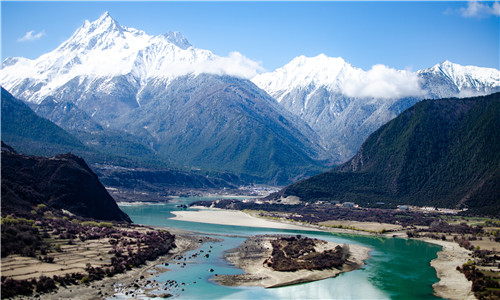
In the morning, your guide will meet you at your hotel lobby, and your Tibet travel will start! This morning we will drive to the Potala Palace. It is in the capital of Tibet and is one of the grandest buildings in the world. With a history of 1300 years, the Potala Palace was built in the 7th century during the period of Songtsen Gampo(629-650), King of Tibet at that time. The palace was to celebrate the marriage between Songtsen Gampo and Princess Wencheng from the Tang Dynasty. Now, the Potala Palace integrates the function of the palace as well as the monastery.
And then we will visit the Jokhang Temple. It is at the center of Barkhor Street. The original name of the temple was “Jyasa”. Later, “Jyasa” became the name of this city and evolved into today’s “Lhasa”. Therefore, people often say that “there was the Jokhang Temple first and then the Lhasa city was built.”. As the “eye of Tibet”, the Jokhang Temple has a paramount position in Tibetan religious culture and has always been the center of various major Buddhist activities. Legend has it that there was a lake before the Jokhang Temple was built. Songtsen Gampo had promised Princess Shakyamun (married to Songtsen Gampo from Nepal) at the lakeside to build a Buddhist temple here. He threw a ring on the ground, and the place where the ring fell would be the location of the temple. But the ring fell into the lake. Therefore, this lake was filled in and the Jokhang Temple was built here.
After visiting the temple, we will go to Barkhor Street. It is Lhasa’s best-preserved street and gathers Lhasa’s religion, economy, culture, and the local customs of Tibet. It is also a must-see place in Tibet. You can buy all kinds of Tibetan clothing, ethnic handicrafts, and local snacks here. After the one-day Tibet local tour, the guide will take you back to the hotel.

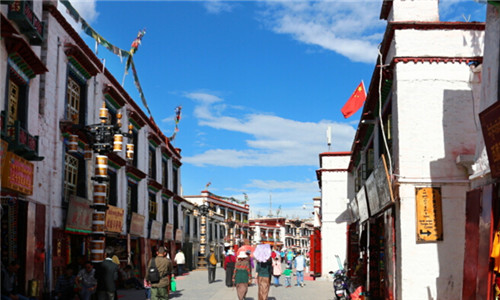
In the morning, after having breakfast in your hotel, your local guide will meet you and take you to visit two monasteries: Drepung Monastery and Sera Monastery. Drepung Monastery is the largest monastery in Tibet and has the highest status in the Gelug of Tibetan Buddhism in China. The lamas at Drepung Monastery are very approachable, and you can invite them to accompany you to visit the monastery. The steps in front of the main Buddhist Hall are inlaid with turquoise, rubies, and other gems. After years of stepping on them, the gems have become more and more dazzling. You may also see Tibetans who come here to pilgrimage, carrying bottles filled with ghee oil. They pour ghee oil into the oil lamps in front of the Buddha statues one by one to pray for health and happiness. Sometimes the oil in the oil lamp in front of a popular Buddha statue is overflowing. At this time, a monk will be assigned to scoop up the overflowing oil and put it in a special container.
After lunch, we will visit the Sera Monastery. Sera Monastery is the treasured place of Lhasa where once eminent monks and living Buddha preached in ancient times. "Sera" means hail in Tibetan. It is said that when the foundation of the monastery was laid, a large hailstorm happened. Therefore, the monastery was named "Sera Monastery" after the construction was completed. There is a peculiar religious activity-“Buddhist Scriptures Debating” at Sera Monastery, which is open to visitors free of charge at 3 pm every day. Don’t miss it out if you encounter this activity. There is also a mysterious place outside Sera Monastery. It is a sky burial platform. But to respect the customs of the local people, the government has forbidden visitors to see the rite of sky burial.
Next, we will visit Norbulingka. Norbulingka means “precious park” in Tibetan, which is a famous architectural complex in Tibet. The park covers an area of about 360,000 square meters. There are three palace buildings in the park and each palace building consists of the palace area, the forest area, and the area in front of the palace. Successive Dalai Lamas moved here to deal with government affairs and hold religious activities in the summer. Hence Norbulingka is also known as Lhasa’s Summer Palace.
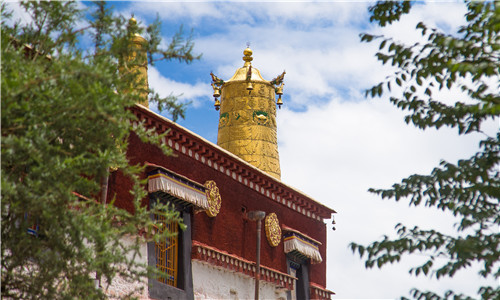
 Gyangtse
Gyangtse Today we will first transfer to Gyangtse which is to the southwest of Lhasa. The whole trip needs to drive for about 5.5 hours(260KM). First, after driving for about 2.5 hours (110KM), you will enjoy the breathtaking view of Yamdrok Lake. Yamdrok Lake is also called “Holy Lake”. “Yamdrok” means “green jade” in Tibetan, from which you can imagine how beautiful it is. Standing on the lakeside, you could see the water showing varying shades of blue as the light changes. The lake water source is the snow water of Nyenchentanglha Mountains, which is one of the three sacred mountains of Tibet.
Then we will continue to drive for about 100 minutes (85KM) to visit the Karola Glacier. It is a glacier in Tibet that can be viewed at close quarters. The place to see the Karora Glacier is about 5400 meters above sea level. It is on the 307th Highway, which connects the sacred Yamdrok Lake and the city of Shigatse. Among all the glaciers in Tibet, the Karola Glacier is the one closest to the main highway. The glacier is said to be the living place of one of four major mountain gods of Tibetan Buddhism - the western mountain god Norge Khamwa Sangbu.
After arriving in Gyangtse, you will first visit Pelkor Monastery. Pelkor Monastery is a typical Tibetan Buddhist monastery that is combined with towers and monasteries. One of the main buildings of Pelkor Monastery is the Bodhi Pagoda, which is on the west side of the main hall. The Bodhi Pagoda is also the only monastery pagoda that has survived completely to this day in Tibet. The Bodhi Pagoda houses more than 100,000 statues of Buddha and is known as the “One Hundred Thousand Buddha Pagoda”.
Then we will transfer to the hotel at Gyangtse county. The hotels here are not luxury, but we will try to make your stay comfortable. Your guide will escort you to check in the room.
Free Time Idea: Gyangtse is an ancient county with a history of more than a thousand years and has been an important transportation hub for Tibet since ancient times. You will visit the 600-year-old Gyangtse Ancient Street. The old street bears the glorious days of trading prosperity in Gyangtse. Horse racing and archery are very common in Tibet. In 1408, Gyantse was the first to make this activity a competition. In the past, the horse racing festival was limited to three events: horse racing, archery, and mounted archery. Nowadays, in addition to retaining the above activities, the festival also includes various cultural activities, such as singing and dancing. The annual horse racing festival here has become the largest regional festival in Tibet.
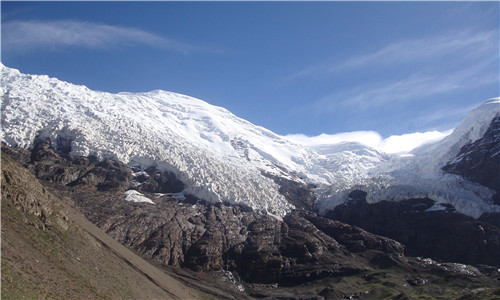

 Shigatse
Shigatse Dingri
Dingri Today we will drive west for about 6 hours(350KM) in total from Gyangtse to Dingri. On the way, we will pass the city Shigatse.
After your breakfast, we will visit the Tashilhunpo Monastery. Tashilhunpo Monastery is the largest monastery in Shigatse. It is famous for its stupa of the Panchen Lamas. The Maitreya Buddha Hall is the most eye-catching hall in the whole monastery. The vivid and solemn statue and exquisite craftsmanship reflect the superb skills of the Tibetans, attracting Buddhists and tourists from home and abroad to visit the monastery and pilgrimage. Another major attraction of Tashilhunpo Monastery is the large number of unattended dogs that gather there to bask in the sun and live in peace with people. Inside the monastery, many places are locked and you can ask the lamas to unlock them for you. Every year in August, a three-day religious dance is held here. The Buddha Exhibition Festival is held here on May 15th every year of the Tibetan calendar. During the festival, three days before and after May 15th,a grand exhibition of Buddha is held. The monks and devotees should pay homage to the Buddha, present their “Hada”(a long silk scarf to pay respects and congratulations), kowtow, and pray to the Buddha to get rid of disasters and bring good fortune.
Then we will drive for about 40 minutes(24KM) to visit Shalu Monastery. The present main hall complex of the Shalu Monastery is preserved from the Yuan Dynasty (1271-1368) and is the most intact of the ancient monasteries we have seen in Tibet. The walls and layout of the Buddhist hall are in the traditional Tibetan style, but the roof is designed in the ancient architectural style of the Han nationality. Shalu Monastery houses a large number of historical relics such as murals, Buddha statues, scriptures, Thangkas (religious paintings framed in colored satin), and Dharma-vessel.
After that, we will drive for about 3 hours(170KM) to visit Sakya Monastery. There are about 20,000 statues of various Buddhas at Sakya Monastery, many of which are precious relics from the Yuan and Ming dynasties. Thangka and frescoes are representative of wonderful Tibetan monastery painting art. There are more than 3000 pieces of Thangka in Sakya Monastery. There is a treasure in Sakya Monastery which is a black wooden box given by Kublai Khan (one emperor of Yuan Dynasty). There is a large white conch in the box and the monks in the monastery regard it as more important than their life. This treasure is usually not shown to the public at ordinary times, so it would be so lucky if you can see it.
And then we will drive for about 2.5 hours (140KM) to Dingri. Along the way, you will stop in Lhatse to stretch your legs and do a little sightseeing. Upon arriving in Dingri, your local guide will help you check into your hotel.

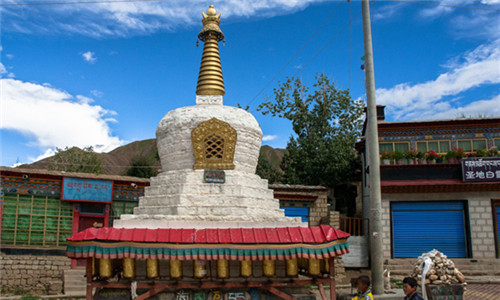
 Shigatse
Shigatse After breakfast in your hotel, you will be driven to Mount Everest (Qomolangma). The distance is about 100 KM, and it takes about 3 hours. Now to protect the environment, Everest Base Camp has been closed to tourists indefinitely. Only the mountaineering team could climb Mount Everest with permission. But we can see the breathtaking view of Mount Everest at Rongbuk Monastery. This monastery is 2 kilometers away from the Everest Base Camp and is recognized as the best place to see Mount Everest. After today’s visit, we will transfer back to Shigatse. It needs to drive for about 6.5 hours (350KM). You will overnight in Shigatse.
)

 Lhasa
Lhasa Today we will drive east for about 5 hours (280KM) back to Lhasa. Although the drive is a bit long, you will enjoy the picturesque natural scenery along the way. You will have lots of photo opportunities. Upon arrival at your hotel in Lhasa, your guide will help you to check in. You can have a good rest.
 Namtso(Dangxiong County)
Namtso(Dangxiong County) After breakfast, we will depart for Namtso Lake. It is to the north of Lhasa. The whole journey(180KM) needs about 5 hours. On the way, you can admire the magnificent Northern Tibetan Prairie without getting off. It is one of China’s five largest prairies. It is situated among the Kunlun, Tanggula, and Gangdis mountain ranges, and is a haven for wildlife.
Then we will first get to the Nyenchenthanglha Observation Deck. It is the best place to enjoy the stunning view of Mount Nyenchenthanglha. In the local folk legends among shepherds and hunters, Nyenchenthanglha Mountain and Namtso Lake are not only the most striking sacred mountains and lakes in Tibet, but also the lovers and couples who live and die together. The Nyenchenthanglha Mountain looks more towering with the Namtso Lake as a backdrop, and the Namtso Lake is more glamorous because of the water reflection of the Nyenchenthanglha Mountain.
After a short visit, we will continue to drive for about 100 minutes(75KM) to the Mountain Pass of La Ghen La. This is the only way to travel to Namtso Lake. It is 5190 meters above sea level. Standing on the Mountain Pass of La Ghen La, you could overlook Namtso Lake and the Northern Tibetan Prairie. It is also a sacred place for Tibetans.
After lunch, we will check in at your guesthouse and then transfer to Namtso National Park. Namtso Lake is the largest inland lake in Tibet and the highest saltwater lake in the world. “Namtso” means heavenly lake in Tibetan. Namtso Lake is also a sacred lake for predicting misfortune and fortune. Therefore, many lamas go on pilgrimage to the lake to divine the future by the paranormal phenomenon that appear in the lake.
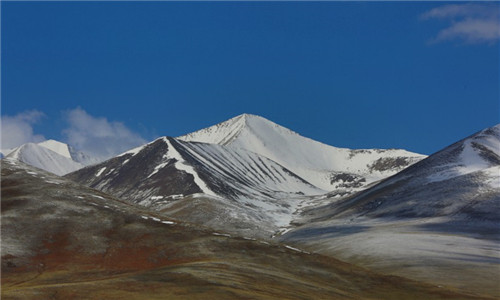
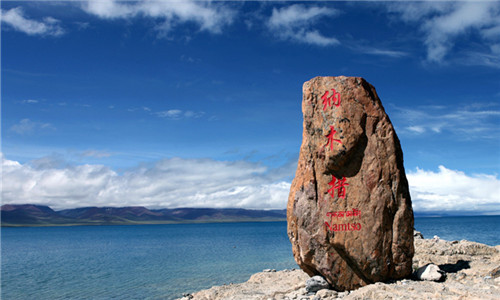
 Lhasa
Lhasa It is not to be missed to watch the sunrise at Namtso Lake. In the morning, you will see the red clouds and the rising sun. You will feel like in a fairyland. After your breakfast, we will drive for about 5 hours(240KM) to Lhasa. You will visit Yangbajing Hot Spring on the way. More than a hot spring, Yangbajing is the first wet steam field developed in China and the highest geothermal power station in the world. In the morning, the weather is still cold and the area around the geothermal field is always filled with white mist and huge clouds of steam rising from the surface of the hot spring. If you come to Yambajing in winter, it is romantic and enjoyable to soak in the hot springs and the magnificent mountain view will present itself to you at the same time. This would be a great experience for your Tibet travel. Then we will return to Lhasa and check in at your hotel.
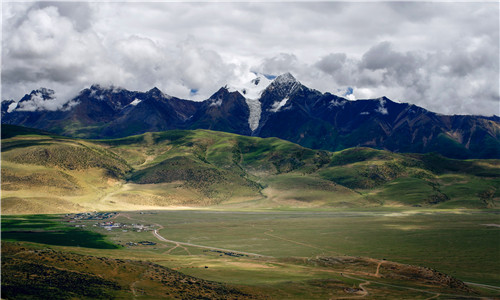
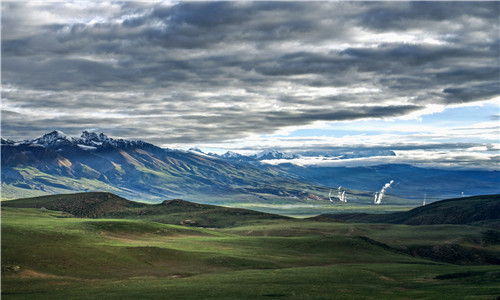
You are free to stroll around or pack your luggage at the hotel this morning. Your guide will take you to the airport for your flight home or next destination. We believe this Tibet tour will stick in your memory for the rest of your life.
Editor: Summer Hou
Proofreader: Betsy He
| City | Five Star hotel list | Four Star hotel list |
|---|---|---|
| Lhasa | Shangri-La Hotel, Lhasa | Thangka hotel |
| Gyangtse | Guest House | Guest House |
| Shigatse | Qomo Langzong Hotel | Qomo Langzong Hotel |
| Dingri | Zhufeng Hotel | Zhufeng Hotel |
| Namtso | Guest House | Guest House |
 |
![]() About your child or infant, please contact us for a discounted price.
About your child or infant, please contact us for a discounted price.



We started with a few days in Beijing & ended in Shanghai, from where we visited the Forbidden City and Great Wall. In between we visited Terra Cotta Warriors Museum, Panda Base, Shanghai Disneyland.

We had a wonderful holiday in China which will remain long in the memory. China is a breathtakingly beautiful country full of splendid temples and palaces, mountains and rivers, peaceful rural scenes and bustling shopping streets.
 QUICK ENQUIRY
QUICK ENQUIRY